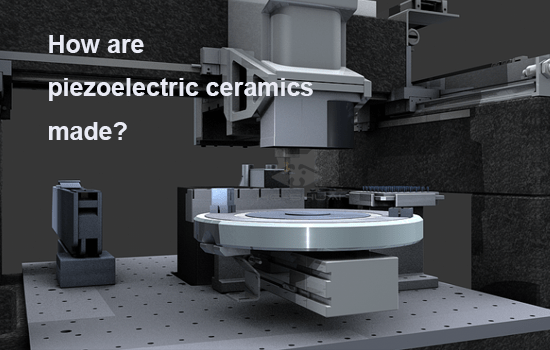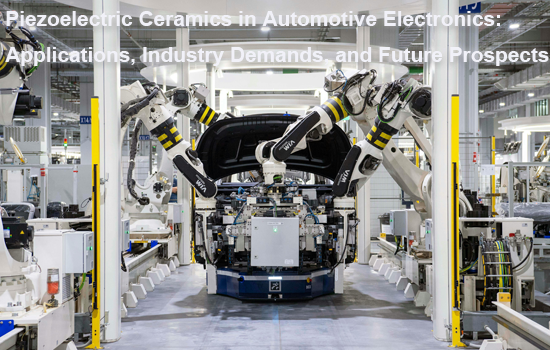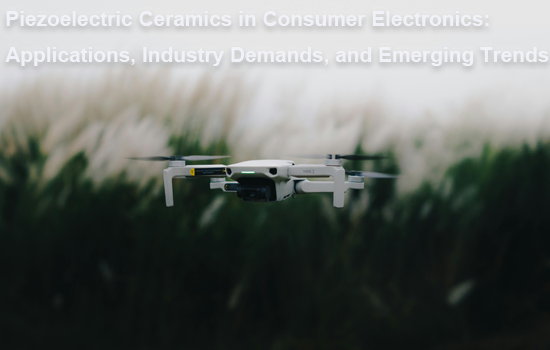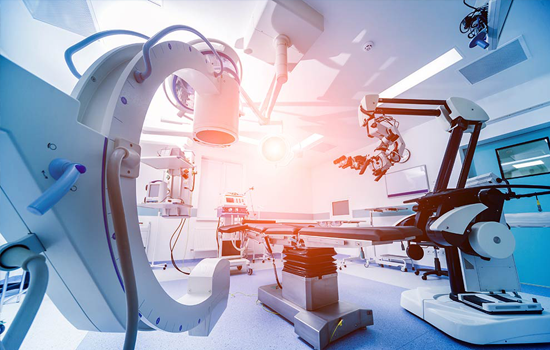Piezoelectric ceramics are very complex, but we make it simple!
Piezoelectric ceramics are produced in a special environment using specialized equipment, and the production process and equipment are not commonly known by the general public. By reading the following article, you will learn more about the production process of piezoelectric ceramics, including:- The recipe for piezoelectric ceramics
- The production process for piezoelectric ceramics
- The equipment used to produce piezoelectric ceramics
- The characteristics of an excellent piezoelectric ceramic factory
- Recommended piezoelectric ceramic factories
 1、Recipe for piezoelectric ceramics
The raw material ceramic recipe is the basis for preparing piezoelectric ceramics. For PZT, its main raw materials are Pb3O4, ZrO2, and TiO2. The selection of raw materials should generally consider their chemical composition and physical state.
Purity of raw materials: The requirement for purity should be moderate. High-purity raw materials are expensive and require high sintering temperatures. Low-purity raw materials have more impurities and require low sintering temperatures.
In the PZT recipe, the major raw materials Pb3O4, ZrO2, and TiO2 account for about 60%, 20%, and 18% by weight, respectively. The total impurity content should not exceed 2%, and the purity should be above 98%.
To meet different usage purposes, we need PZT piezoelectric ceramics with various properties. Therefore, we can add different ions to replace the Pb2+ ion on the A site or the Zr4+ and Ti4+ ions on the B site, thus improving the material's performance.
Currently, the requirements for material performance in the field of piezoelectricity are becoming higher and higher. PZT-based ternary system "modified" piezoelectric ceramic materials have been widely researched and applied.
1、Recipe for piezoelectric ceramics
The raw material ceramic recipe is the basis for preparing piezoelectric ceramics. For PZT, its main raw materials are Pb3O4, ZrO2, and TiO2. The selection of raw materials should generally consider their chemical composition and physical state.
Purity of raw materials: The requirement for purity should be moderate. High-purity raw materials are expensive and require high sintering temperatures. Low-purity raw materials have more impurities and require low sintering temperatures.
In the PZT recipe, the major raw materials Pb3O4, ZrO2, and TiO2 account for about 60%, 20%, and 18% by weight, respectively. The total impurity content should not exceed 2%, and the purity should be above 98%.
To meet different usage purposes, we need PZT piezoelectric ceramics with various properties. Therefore, we can add different ions to replace the Pb2+ ion on the A site or the Zr4+ and Ti4+ ions on the B site, thus improving the material's performance.
Currently, the requirements for material performance in the field of piezoelectricity are becoming higher and higher. PZT-based ternary system "modified" piezoelectric ceramic materials have been widely researched and applied.
 2、Production Process of Piezoelectric Ceramics
The production process of piezoelectric ceramics mainly includes the synthesis of ceramic raw material powders, molding, sintering, electrode application, and polarization. During these processes, a series of physical and chemical changes occur. The performance of piezoelectric ceramics is directly related to the composition and preparation process of the material, so a set of stable and reasonable process parameters is an important guarantee for obtaining excellent material properties.
2、Production Process of Piezoelectric Ceramics
The production process of piezoelectric ceramics mainly includes the synthesis of ceramic raw material powders, molding, sintering, electrode application, and polarization. During these processes, a series of physical and chemical changes occur. The performance of piezoelectric ceramics is directly related to the composition and preparation process of the material, so a set of stable and reasonable process parameters is an important guarantee for obtaining excellent material properties.
 2.1 Preparation of Green Body
The green body is prepared by dry pressing. Before dry pressing, the powder should be granulated. That is, a binder that accounts for about 5% of the feedstock is added to the powder, stirred evenly, and screened. Then, the pre-pressed block is ground and sieved to a fine particle size. The purpose of granulation is not only to evenly distribute the binder in the powder but also to compress the particles themselves, reduce the amount of air in the material, and facilitate molding, resulting in a more uniform sample density.
2.2 Ceramic Sintering and Mechanical Processing
After dry pressing, the green body needs to be sintered at high temperature to become a ceramic. Sintering is the process of particle rearrangement to increase density and crystal growth. Excessive sintering temperature can cause uneven growth of ceramic crystals or an uneven structure, while low sintering temperature can result in incomplete development of ceramic crystals, both of which can affect the piezoelectric properties of the PZT piezoelectric ceramic element.
2.3 Electrode Application
Metal electrodes are required between the two levels of the PZT piezoelectric ceramic element to conduct electricity and exhibit piezoelectric properties. There are many traditional methods of electrode application, such as burn-in silver layers, vacuum evaporation, chemical silver plating, and chemical copper plating.
2.4 Polarization
After the PZT piezoelectric ceramic element is electrode applied, it needs to be polarized to display its piezoelectric effect. To achieve perfect polarization of the piezoelectric ceramic, it is necessary to reasonably select the polarization conditions, including polarization electric field, polarization temperature, and polarization time. Only under the action of the polarization electric field can the electric domains be oriented and aligned along the direction of the electric field. The higher the polarization electric field, the greater the effect of promoting domain orientation and alignment, and the more perfect the polarization.
2.1 Preparation of Green Body
The green body is prepared by dry pressing. Before dry pressing, the powder should be granulated. That is, a binder that accounts for about 5% of the feedstock is added to the powder, stirred evenly, and screened. Then, the pre-pressed block is ground and sieved to a fine particle size. The purpose of granulation is not only to evenly distribute the binder in the powder but also to compress the particles themselves, reduce the amount of air in the material, and facilitate molding, resulting in a more uniform sample density.
2.2 Ceramic Sintering and Mechanical Processing
After dry pressing, the green body needs to be sintered at high temperature to become a ceramic. Sintering is the process of particle rearrangement to increase density and crystal growth. Excessive sintering temperature can cause uneven growth of ceramic crystals or an uneven structure, while low sintering temperature can result in incomplete development of ceramic crystals, both of which can affect the piezoelectric properties of the PZT piezoelectric ceramic element.
2.3 Electrode Application
Metal electrodes are required between the two levels of the PZT piezoelectric ceramic element to conduct electricity and exhibit piezoelectric properties. There are many traditional methods of electrode application, such as burn-in silver layers, vacuum evaporation, chemical silver plating, and chemical copper plating.
2.4 Polarization
After the PZT piezoelectric ceramic element is electrode applied, it needs to be polarized to display its piezoelectric effect. To achieve perfect polarization of the piezoelectric ceramic, it is necessary to reasonably select the polarization conditions, including polarization electric field, polarization temperature, and polarization time. Only under the action of the polarization electric field can the electric domains be oriented and aligned along the direction of the electric field. The higher the polarization electric field, the greater the effect of promoting domain orientation and alignment, and the more perfect the polarization.
| Process name | Purpose |
| ingredients | Carry out material pretreatment, remove impurities and dehumidify, and then weigh various raw materials according to the formula ratio |
| mixed grind | Generally, dry grinding or wet grinding is adopted. Dry milling can be used for small batches, and stirring ball milling or jet milling can be used for large batches, with high efficiency. The purpose is to mix and grind all kinds of raw materials, and to carry out the quasi-conditions of complete solid-phase reaction for pre-calcination. |
| pre-burn | At high temperature, each raw material undergoes a solid-state reaction to synthesize piezoelectric ceramics. This process is very important. It will directly affect the sintering conditions and the performance of the final product. |
| secondary grinding | The pre-fired piezoelectric ceramic powder is finely vibrated, mixed and ground. Lay a solid foundation for the uniform performance of the porcelain. |
| granulation | Make the adhesive more uniform, make the density of the molded sample more uniform, and discharge the air between the particles, which is conducive to molding and densification. |
| forming | It refers to the process of volume shrinkage, density increase and strength increase of the formed green body at a higher temperature. |
| plastic row | Prevent the deformation and cracking of the sample body during the sintering process due to decomposition and volatilization at high temperature. |
| sintered into porcelain | The process of heating the green body to a sufficiently high temperature but lower than the melting point, so that the volume of the ceramic body shrinks, the density increases and the strength increases. |
| Shape processing | Grind the burnt product to the required finished product size. |
| Electrode | Set the upper conductive electrode on the required ceramic surface. The general methods include silver layer burn-in, chemical deposition and vacuum coating. |
| high voltage polarization | Orientate the electric domains inside the ceramics, so that the ceramics have piezoelectric properties. |
| Aging test | After the performance of the ceramic is stable, check various indicators to see if the expected performance requirements have been met. |


 4、Characteristics of an Excellent Piezoelectric Ceramic Manufacturer
Has exclusive and advanced ceramic formulas
Provides customized piezoelectric ceramic services
Factory has a complete production process
Has its own production workshop
Quick and effective problem-solving abilities
5、Recommended Piezoelectric Ceramic Factories
He-shuai Ltd,China
4、Characteristics of an Excellent Piezoelectric Ceramic Manufacturer
Has exclusive and advanced ceramic formulas
Provides customized piezoelectric ceramic services
Factory has a complete production process
Has its own production workshop
Quick and effective problem-solving abilities
5、Recommended Piezoelectric Ceramic Factories
He-shuai Ltd,China
- Stock Manufacturer
- Custom Manufacturer
- Piezoelectric ceramic Supplier/Distributor
- Piezoelectric ceramic customization service
- Piezo Ceramic Solutions
- Piezo Ceramic Design
- Advanced Ceramic Formulation
- Inexpensive piezoelectric ceramics
- Professional piezoelectric ceramic company




